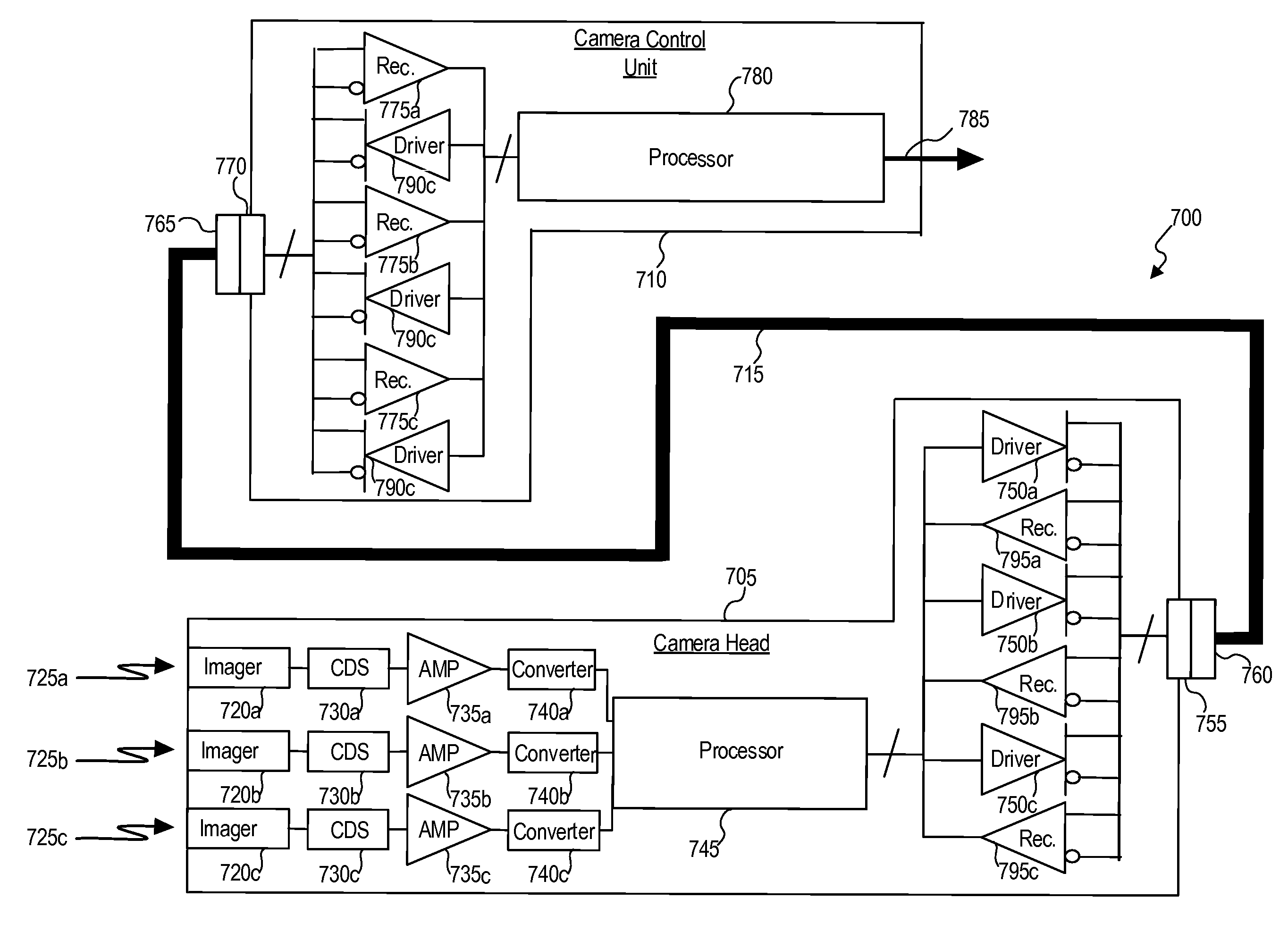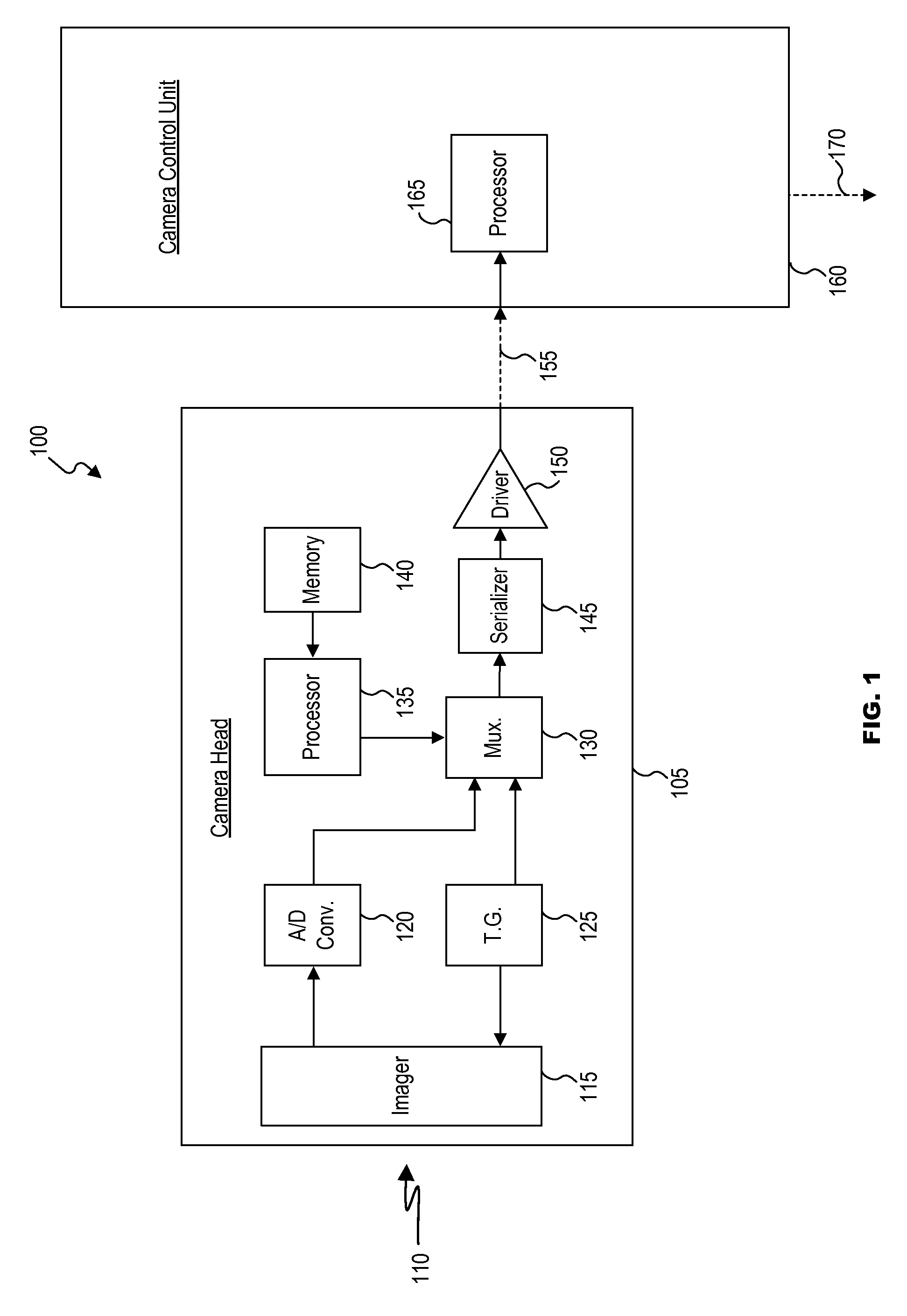Intelligent Camera Head
a camera head and intelligent technology, applied in the field of camera heads, can solve the problems of not being able to utilize new or different camera heads utilizing different timing signals, not being able to direct view of internal body cavities by medical personnel, and (built-in) solid-state imagers, etc., to achieve the effect of increasing the data carrying capacity of the cable connection, increasing the data carrying capacity, and increasing the cable length
- Summary
- Abstract
- Description
- Claims
- Application Information
AI Technical Summary
Benefits of technology
Problems solved by technology
Method used
Image
Examples
Embodiment Construction
[0031]FIG. 1 illustrates an advantageous embodiment of the video imaging system 100. A camera head 105 is provided having an imager 115 for receiving photonic energy 110 reflected off a viewed object (not shown). The imager 115 utilizes timing signals generated in timing generator 125 to develop output analog image data corresponding to the received photonic energy 110. The imager 115 converts the received photonic energy 110 to output analog image data received by analog-to-digital converter 120. The analog-to-digital converter 120 in turn converts the received analog image data to digital image data. The digital image data is then fed into multiplexer 130. The timing generator 125 also provides an input to multiplexer 130. A processor 135, having access to a memory device 140 is also located in the camera head 105. The processor 135 may send camera information stored in memory device 140 to multiplexer 130. The multiplexer 130, multiplexes the various received input signals, gener...
PUM
 Login to View More
Login to View More Abstract
Description
Claims
Application Information
 Login to View More
Login to View More - R&D
- Intellectual Property
- Life Sciences
- Materials
- Tech Scout
- Unparalleled Data Quality
- Higher Quality Content
- 60% Fewer Hallucinations
Browse by: Latest US Patents, China's latest patents, Technical Efficacy Thesaurus, Application Domain, Technology Topic, Popular Technical Reports.
© 2025 PatSnap. All rights reserved.Legal|Privacy policy|Modern Slavery Act Transparency Statement|Sitemap|About US| Contact US: help@patsnap.com



